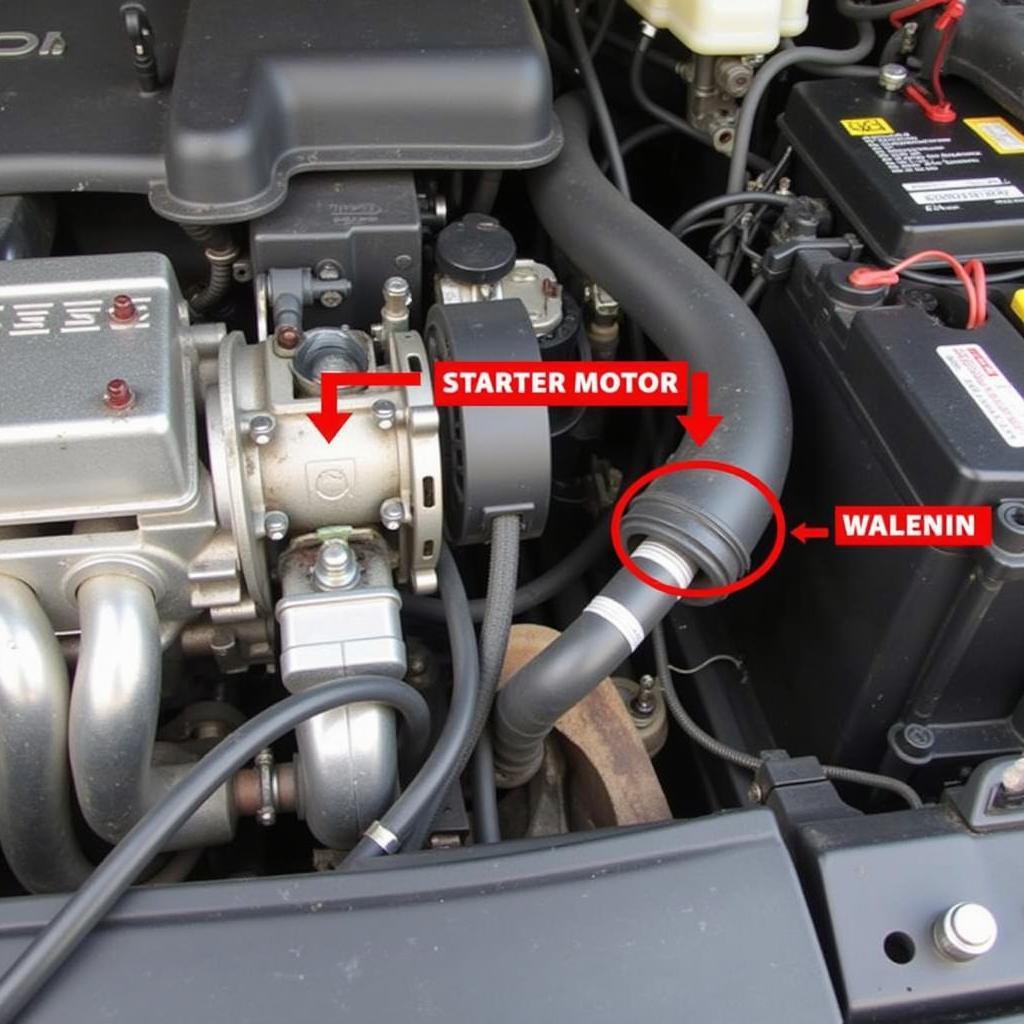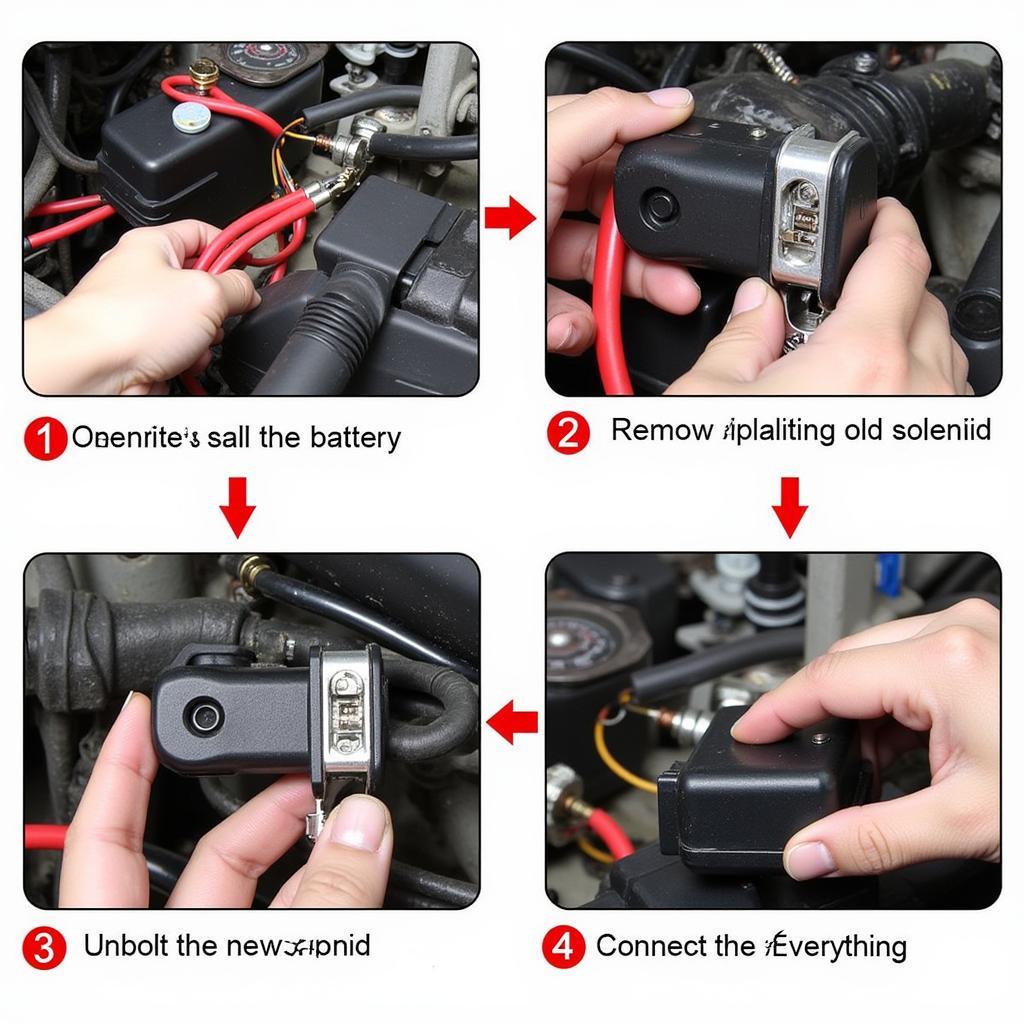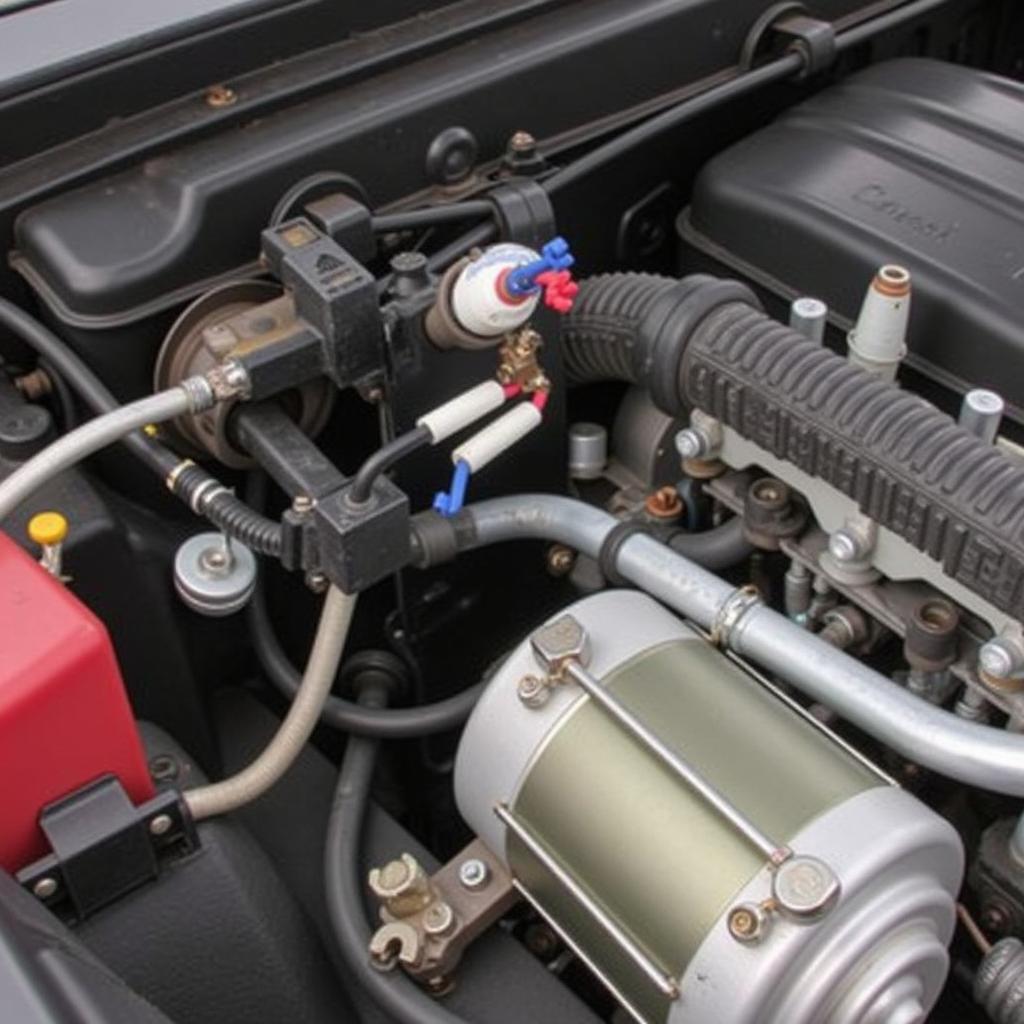A malfunctioning car starter solenoid can leave you stranded. This comprehensive guide will help you diagnose and fix a car starter solenoid issue, whether you’re a DIY enthusiast or a seasoned mechanic. Understanding how this small but crucial component works is the first step to getting your car back on the road. We’ll explore common problems, troubleshooting steps, and repair options for your car starter solenoid. Learn how to tackle this issue effectively and save yourself time and money.
A faulty starter solenoid can manifest in several ways, from a clicking sound to complete engine silence. Locating and testing the solenoid is crucial for a proper diagnosis. Let’s delve into the details of How To Fix A Car Starter Solenoid. You might be surprised at how much you can do yourself! For help with starter tooth wear, see our guide on fixing car starter tooth wear.
Understanding the Car Starter Solenoid
The starter solenoid acts as a bridge between your car’s battery and the starter motor. When you turn your key, the solenoid engages, sending a powerful surge of electricity to the starter motor, which then cranks the engine. A faulty solenoid interrupts this process, preventing your car from starting.
Common Car Starter Solenoid Problems
Several issues can plague a car starter solenoid:
- Clicking Sound: A rapid clicking sound when you turn the key is often a sign of a failing solenoid, indicating insufficient power to engage the starter.
- No Sound: If you hear nothing when you turn the key, the solenoid may be completely dead, preventing any power from reaching the starter motor.
- Grinding Noise: A grinding noise can point to a solenoid that engages the starter motor but doesn’t fully retract, leading to gear damage.
- Intermittent Starting: Sometimes the car starts normally, and other times it doesn’t. This inconsistency can indicate a failing solenoid connection or internal damage.
 Car Starter Solenoid Location
Car Starter Solenoid Location
Troubleshooting a Faulty Car Starter Solenoid
Before replacing the solenoid, it’s essential to diagnose the problem accurately. Here’s how:
- Check the Battery: Ensure the battery terminals are clean and tight. A weak battery can mimic a bad solenoid.
- Test the Starter: Use jumper cables to bypass the solenoid and connect directly to the starter motor. If the engine cranks, the solenoid is likely the culprit.
- Inspect the Wiring: Look for loose, corroded, or damaged wires connected to the solenoid.
- Test the Solenoid Voltage: Use a multimeter to check the voltage at the solenoid’s terminals when the key is turned to the start position. Low or no voltage indicates a wiring or ignition switch problem.
How to Fix a Car Starter Solenoid: Replacement Guide
Replacing the starter solenoid is often the most effective solution. While the exact procedure varies depending on the car model, the general steps are similar. For more information on fixing a starter in your car, refer to our guide on how to fix my starter in my car.
- Disconnect the Battery: Always disconnect the negative battery cable first for safety.
- Locate the Solenoid: The solenoid is typically attached to the starter motor.
- Remove the Wiring: Carefully disconnect the wires attached to the solenoid. Take pictures before removing anything to ensure proper reconnection.
- Remove the Solenoid: Unbolt the solenoid from the starter motor.
- Install the New Solenoid: Attach the new solenoid to the starter motor and reconnect the wiring.
- Reconnect the Battery: Reattach the negative battery cable.
- Test the Starter: Turn the key to verify the new solenoid is working correctly.
If your foreign car won’t start, check out our helpful guide: foreign car will not start fix.
 Replacing Car Starter Solenoid
Replacing Car Starter Solenoid
“A common mistake people make is not checking the battery first. A weak battery can cause the starter solenoid to click rapidly, mimicking a faulty solenoid,” says John Smith, Lead Automotive Technician at Smith Auto Repair.
Conclusion
Knowing how to fix a car starter solenoid can empower you to tackle a common car problem. By understanding the solenoid’s function, troubleshooting the issue, and following the replacement steps, you can save time and money. While this guide provides general information, always consult your car’s service manual for specific instructions. For insights into clicking noises after turning off your car, visit how to fix clicking noise after car turned off. Remember, if you’re uncertain about any step, it’s always best to consult a qualified mechanic. Contact AutoTipPro at +1 (641) 206-8880 or visit our office at 500 N St Mary’s St, San Antonio, TX 78205, United States for professional assistance. We are here to help you get back on the road!
“Investing in a quality replacement solenoid is essential for long-term reliability. Cheap solenoids often fail prematurely, leaving you stranded again,” advises Maria Garcia, Senior Electrical Systems Engineer at Garcia Auto Electric. If you’re curious about the cost, see our guide on how much it cost to fix car starter.
 New Car Starter Solenoid Installed
New Car Starter Solenoid Installed
FAQ
- Can a bad starter solenoid drain my battery? Yes, a faulty solenoid can continuously draw power, even when the car is off, leading to a drained battery.
- How long does a car starter solenoid last? A starter solenoid typically lasts for the lifespan of the starter motor, often exceeding 100,000 miles.
- What tools do I need to replace a car starter solenoid? Common tools include wrenches, sockets, screwdrivers, and possibly a multimeter.
- Is it dangerous to replace a car starter solenoid myself? Working with car electrical systems can be dangerous. Always disconnect the battery before starting any work.
- How much does a new car starter solenoid cost? The cost varies depending on the car make and model, but solenoids typically range from $20 to $100.
- Can I test a car starter solenoid without removing it? Yes, you can test the solenoid with a multimeter while it’s still installed.
- What are the symptoms of a bad starter relay vs. a bad starter solenoid? Similar symptoms can occur, making it crucial to perform proper testing to pinpoint the faulty component.




Leave a Reply